Pole Evolink 140 - Review
Pole Bicycles are a relatively new brand from Finland, but one that has already caused quite a stir around those 'in the know.' Everybody wants to try one, but they are rare beasts. This is set to change as 2016 models were a sellout, and 2017 production has seen a multi-fold increase in volume due to heavy demand from this direct-to-consumer Scandinavian seller.
I have been riding an Evolink 140 since last June, and over the last few months, the updated 2017 frame. Even though their range of bikes look similar, there are various options of wheel size, travel, and slightly differing geometry numbers for disciplines from cross country racing to downhill. Here we focus on the 140mm travel, 29" wheeled frame only, as this has been my long-term custom build, used as a workhorse for testing various products.
Pole Evolink 140 2017 Details
• Intended use: trail, enduro
• Travel: 140mm
• 29" wheels
• 64° head angle
• 456mm chainstay
• 142mm or 148mm rear hub spacing
• 7005–T6 alloy frame
• Evolink suspension system
• Sizes: XS, S, M, L
• Frame Weight: 3.9kg inc. shock, axle, headset, seatclamp, size Large (actual)
• Price: €2450 frame inc. shock, axle, headset
• www.polebicycles.com
• Intended use: trail, enduro
• Travel: 140mm
• 29" wheels
• 64° head angle
• 456mm chainstay
• 142mm or 148mm rear hub spacing
• 7005–T6 alloy frame
• Evolink suspension system
• Sizes: XS, S, M, L
• Frame Weight: 3.9kg inc. shock, axle, headset, seatclamp, size Large (actual)
• Price: €2450 frame inc. shock, axle, headset
• www.polebicycles.com
Framesets start at €2450 including a RockShox Monarch Plus RT3. Bikes start at €4100 for a RockShox, RaceFace and DT Swiss build. I'm sure I'm missing something here... oh yeah, all Pole bikes are arguably the longest production bikes on the market. I'm still missing something interesting, as anyone can make a tube longer, can't they?... Oh yeah, the Evolink has two freaking bottle cage mounts!
Suspension Design
The alloy frame uses a dual-link design dubbed the Evolink. The solid rear triangle rotates on two short links, one link rotates around the bottom bracket, the other is close by, underneath the seat tube area.
The linkage is designed to make the instant center (the actual pivot point) rotate in front of, and approximately around, the bottom bracket. This starts with a medium amount of anti-squat, around 85% depending on sag, which falls away as the suspension moves through its travel. This should give good support when pedaling at the sag point, but doesn't create a lot of pedal kickback deeper into the travel.
The leverage ratio is progressive, but increases at the end of the shock's stroke. This is designed to work in conjunction with the rapid ramp up at the end of an air shock's travel.
Geometry/Sizing
I have been riding a large-sized frame, which on paper has a 510mm reach, a 64º head angle (with a 150mm travel fork) and a 456mm chainstay. With my 160mm fork, the head angle is closer to 63º, the stated bottom bracket drop is 20mm below the axles, which is 352mm from the floor with my 2.5" Maxxis Minion tires.
It's fantastic to feel like a bike has a really good fit for me in a large size with a short 35mm stem and wide 800mm bar, as I am no giant at 185cm – I know plenty of riders who are a lot taller than me. Unfortunately, there is currently no XL size in the 29" Evolink 140, but other models do carry this extra size.
Details
The Evolink frame uses an interchangeable rear wheel dropout system, to switch between 142 or 148mm hub widths. Simply pull the inserts out from the inside face of the dropouts and insert the correct set. The old fashioned IS160mm (International Standard, remember that...) brake mount is used and 3mm washers are needed here for correct brake spacing on a 142mm hub. The supplied Maxle stays the same for both widths.
The shock is nestled between a split seat tube, which does create some access issues for an internally-routed dropper post. I ran a Fox Transfer post for the duration of the test and there's not a huge amount of space to fit the actuation cable around the shock. An externally-routed post would be a better solution than my choice. I also found my 150mm drop Transfer was close to being as low as possible inside the seat tube, partly due to the actuation mechanism at the bottom of the post; shorter riders may not be able to run as long dropper post/internal dropper and get the saddle as low as they need.
A tall, 135mm tapered head tube is supplied with a Cane Creek headset with a 15mm high stack top cap. This could be the second issue for shorter riders and low handlebar lovers, I generally run a fairly high bar (107 cm from the ground) and my stem was usually slammed with one 10mm spacer and a low, 18mm rise bar.
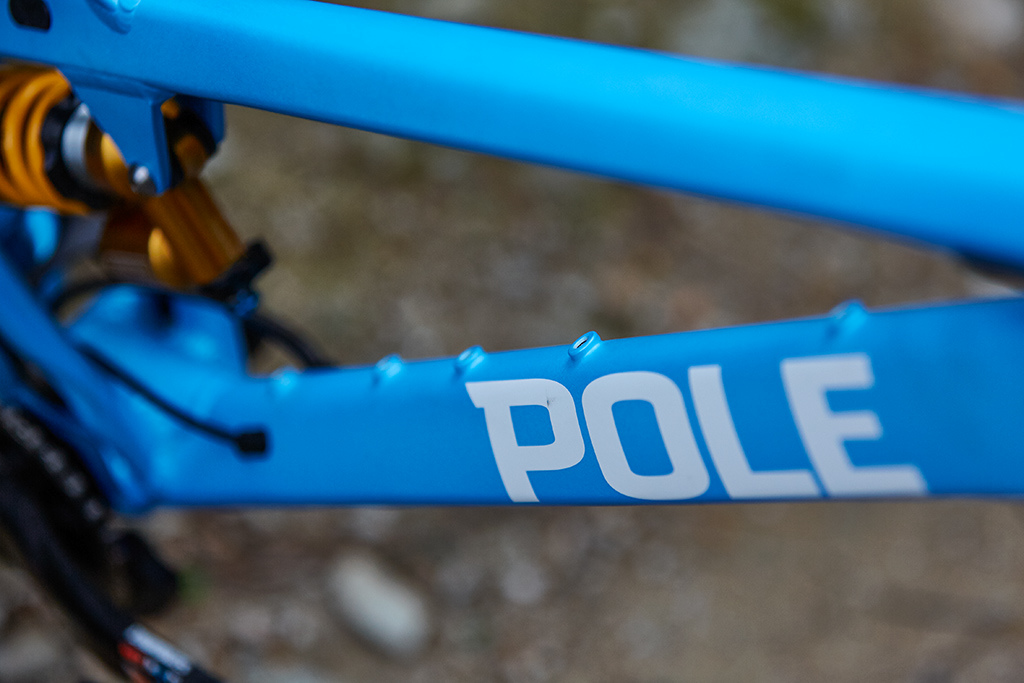
There is internal and external routing on the Pole, including plenty of hardware options and frame plugs for various size cables and setups. I'm not really sure why I wasted so much of my life getting the cables inside the frame, as I prefer keeping things external, but I did. Unfortunately, this leaves a lot of chunky bosses protruding from the frame. You can fit a pair of water bottles on the top and underside of the downtube.

There are masses of tire clearance on the Pole, even with wide rims and 2.5" Maxxis Minions installed.
The frame weighs in at 3.9kgs including shock, Maxle, seatclamp and headset. Certainly not a lightweight, but I have given up on that tosh. It's a mountain bike, so it needs to ride up and down a mountain, not reach a magical number on the scale in my bathroom. The current build (pictured) is 100% carbon-fiber free and everything has been hand-picked to take a beating. When I say hand-picked, I mean it has survived more than a few weeks before needing replacement. Coil shocks, downhill tires, ProCore rear, Huck Norris front, plenty of sealant, big brakes, big wheels and flat pedals means she weighs in around 37lbs. But that hasn't held me back from 80km pedals with 9000ft feet of upwards. With an average trail bike build, it should be easy to get close to the 30lb mark.
Three Questions with Leo Kokkonen, Pole Bicycles Designer, and CEO.
 How did you decide upon the geometry numbers for this bike? It would appear to be very extreme to most riders checking the charts.
How did you decide upon the geometry numbers for this bike? It would appear to be very extreme to most riders checking the charts.
By experimenting. We started from an insight that the existing trail bikes are too dangerous to ride because of the small wheelbase. We made an enduro mule from my old K9 DH bike to experiment with the angles and after that, we knew right away that we should push the geometry even further. We ended up with Evolink's geometry and kinematics by testing with stopwatches.
 Most people think that this modern/extreme geometry is only for expert-level riders. How do you think it works for the average rider?
Most people think that this modern/extreme geometry is only for expert-level riders. How do you think it works for the average rider?
My mom, mother-in-law and father-in-law (~65yrs) all ride Evolinks. They love the bike because of the upright riding posture. Other than that, it's easier for beginners to ride Evolink as it is safer to ride a longer wheelbase. You can gain speed easier and everyone knows that it's more fun if you ride more fluidly.
 The suspension kinematic doesn’t pedal as well as other bikes, in terms of the anti-squat neutralizing suspension movement on a smooth surface. Does this translate to better performance off road?
The suspension kinematic doesn’t pedal as well as other bikes, in terms of the anti-squat neutralizing suspension movement on a smooth surface. Does this translate to better performance off road?
I think that the anti-squat and the suspension dynamics are connected to each other. The anti-squat creates pedal kickback and that restricts the suspension's movement as it supposed to be because of the anti-squat. The Evolink's progressive leverage ratio gives the rider more support from the suspension, so at that point there is no need for overdesigned mechanical anti-squat. We found a balance between these two. Also, the anti-squat creates stress to the frame. The more you have anti-squat, the more it stresses the frame as the chain becomes another link that is actually moving on a different path than the rear wheel. Because of the mechanical anti-squat the chain pulls the chainstay to the drive side when the wheel travels through the travel (and the rider weight is on the pedals) and if the chainstays are super stiff, anti-squat wears out the drivetrain more easily.
The advantages on Evolink is that we have a very supportive and active suspension. The anti-squat and the suspension work together and I don't hardly ever touch the climb switch even when I ride my local flat woods. There is enough anti-squat on the sag point. The anti-squat on the Evolink is reducing towards the end of the stroke where you hardly ever pedal. This is why there is not much pedal kickback and this gives a smoother ride. All together: geometry, anti-squat and the suspension are linked together. If you look at only the one number, you will get a wrong idea of the bike. I think people have gotten used to look at one number because most of the bikes are very similar compared to each other. This is why it might be difficult to understand our new-school bikes.
Climbing
This bike (along with the Nicolai GeoMetron) can heavy-handedly hammer the final nails into the coffin about head angle and stem length being the dictators of climbing prowess. Even when I had an angle set installed and the degree was hovering around 62º with a 35mm stem, I can, and did, climb everything better and more easily than any other bikes. The super steep seat tube angle combined with a long chainstay made my life much easier with a more upright position and when things inclined, much less body English is needed and less energy exerted trying to keep the front wheel on the ground. The slack head angle also seems to allow the front wheel to roll over trail obstacles more easily even when climbing.
The steep seat angle does cause a problem of longing for more dropper post travel. The steeper seat angle means that your legs don't extend as far as the seat rises, meaning that the overall riding height is higher, and the full 150mm drop feels less than with a slacker seat angle.
For reference, the centre of my seat post clamp at full height (725mm from bottom bracket centre) was 150mm behind the bottom bracket in a horizontal plane. This gave me an actual seat angle of approx. 78º.
I still ran the saddle extremely far forward on the rails, as I feel it gives an even better climbing position – "once you go steep, you never go back" – I think that's the old adage. Contrary to popular belief, slamming the seat forwards on the rails has no relation to the extra long top tube. Some riders think that a slammed forward seat is to get the rider closer to the handlebars on a long reach bike, but this is not the case. The distance from the handlebar centre to seat post centre is 685mm and feels easily comfortable for me, and less than that of many shorter bikes with steeper head angles, slacker seat angles, and longer stems.
The Evolink pedals OK when the suspension is unlocked on smooth ground, but will bob more than most bikes, this is offset when pedalling through rough stuff as the rear wheel moves easily over obstacles under power. The steeper seat angle leads to less suspension bob when pedalling seated, due to the angle of the 'seat tube lever' having less effect on the suspension. When standing, the long front centre moves body weight more towards the front of the bike, this also results in less sagging and bobbing here too.
Trail
Manualing this bike isn't easy. Who would have expected that? However, I can pop the front wheel with no problem long enough to get over any trail obstacles. For performing super long manuals, getting such a beast up, and on to the balance point takes some muscle and exaggeration, but when it's up there it keeps going no problem. Albeit it does look a little strange when your front wheel is four meters off the ground.
The whopping 1314mm wheelbase makes fore-aft weight changes much less sensitive than on a small bike. Some people might think that this makes for a boring or sluggish bike. I think the opposite. When you have masses of stability, this allows the rider to be super aggressive and less precise when weighting either wheel in different situations. It also allows more aggressive manoeuvres with ease and confidence, like cutting up onto a high line, getting an inside line or sending a jump. I also have a level of riding accuracy at speed on the Evolink that I struggle to match with any other bike.
Descending
The capability of this bike has led me to a downhill orientated build. The shape allows excessive speeds and rarely a reason to brake, but is limited by the short 140mm travel, this has led to plenty of over-excitement and a pile of lightweight rims and tires that couldn't handle the pace. This was finally 'solved' (I am going to regret saying this) by Maxxis Minion DHF downhill casing tires, combined with Schwalbe ProCore rear and Huck Norris in the front.
Cornering? Surely such a big bike can't go around corners? Think again. Yes, super tight switchbacks that need trials skills to turn aren't so easy, but on anything that can be ridden around with both wheels on the ground, the Evolink storms through. Aim the front wheel into the turn, lean in, experience oodles of grip, stability, and balance. Exit fast.
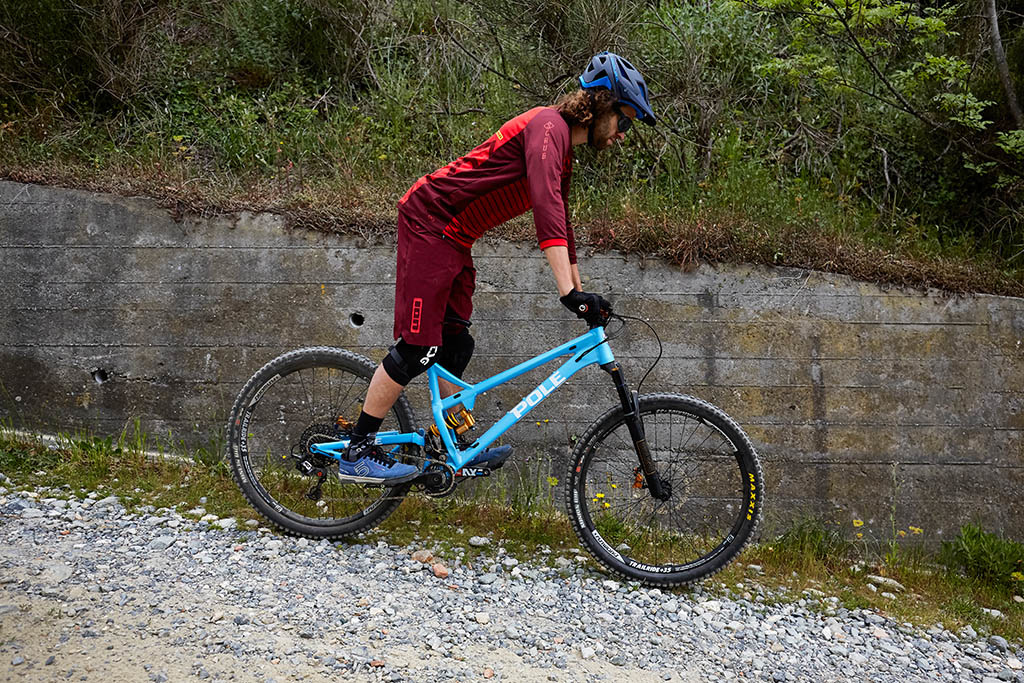
A straight line through your shoulders, hands, forks and front axle gives great stability for descending.
If anything to Evolink is too stable. Its constant desire to truck through the worst situation in a straight plane means it can be quite hard to keep it leaned into cambers and stay on track in long, flat corners. It also slows down direction changes between consecutive corners. This is a combination of the angles, huge gyroscopic motion of the heavy tire combinations, and the bottom bracket drop between the axles. Dare I say it, the bottom bracket might benefit from the same drop below the axles as a 27.5" bike, instead of the same measurement from the floor – blasphemy!
Thoughts
Geometry: I'm convinced by these forward geometry bikes like the Pole, GeoMetron, and Mondraker. If it was up to me, I would never choose anything else again. In fact, considering riding other bikes kind of upsets me before I have to mount them. Many are not convinced, and I think can be because if you are habituated to something very different, these machines are alien at first, but having had the opportunity over the last few years to really get some time on them, and back to back with other 'normal' bikes I can only find advantages and benefits.
But what about beginners? "It's easy for you, Paul, you have expert-level skills, and that is why you have the ability to ride such a bike," is touted from the naysayers. My argument is this – if I can ride a certain trail on this bike with ease, but be scared on the same trail with a 'normal' bike and struggle my way down, what is going to happen to a rider off lesser ability? Huge stability up and down the hill is going to be better for any riders. On the Evolink, it's easier to climb, easier to predict, and there is little chance of going over the handlebars. I haven't been close to an OTB on this bike, but how many riders do you see after their first bike ride on a beginner bike with a long stem, short frame, and steep head angle – with a broken wrist or collarbone.
Playing catch-up. Big brands are slower to move, for a number of reasons, but we have already seen nearly all brands moving incrementally towards Pole-style shapes. I predict in five years, the Poles and GeoMetrons will be nothing out of the ordinary. I'll bet you fifty quid.
Isn't a 510mm reach ridiculous? On paper, it might seem that way, but short stems and wide bars have a big impact on this. Now I know reach isn't everything, but let's consider this: My 2014 Specialized Enduro 29 in XL size came with a 90mm stem (which was swapped out before the first ride), which the designers must have decided gives the correct cockpit size for an XL rider. Combine the 465mm reach of that bike and the stem, 465 + 90 = 555mm. This Pole has a 510mm reach with a 35mm stem, 510 + 35 = 545mm. The other thing to consider here is that a wider handlebar moves the rider closer towards the front of the bike, making it feel shorter, and everybody likes a wider bar and a shorter stem than they did five years ago – if their frame is five years old, though, but they have gone wider/shorter, their bike is now likely to be too small.
Isn't a really slack head angle ridiculous? Not really. Motocross bikes have head angles around 63º. MX bikes are designed to be ridden on a level course. Riding with acceleration power the rear suspension will sag, the front of the bike will lift and give an even slacker dynamic head angle. For me, anything that starts to head downwards is the fun part of mountain biking, which will move body weight towards the front of the bike and steepen the HA. So we could say a mountain bike should have a slacker head angle than an MX bike? Mountain bikes are still working their way out of a hole that was dug by road biking predecessors.
Pinkbike's Take:

About the Reviewer
Stats: Age: 31 • Height: 6'1” • Ape Index: +4" • Weight: 75kg • Industry affiliations / sponsors: None • Instagram: astonator
Paul Aston is a racer and dirt-jumper at heart. Previously adding to the list of non-qualifiers at World Cup DH events, now he attacked enduro before it was fashionable. Based in the UK, but often found residing between mainland Europe and New Zealand allows him to experience a huge variety of terrains and trails.
Stats: Age: 31 • Height: 6'1” • Ape Index: +4" • Weight: 75kg • Industry affiliations / sponsors: None • Instagram: astonator
Paul Aston is a racer and dirt-jumper at heart. Previously adding to the list of non-qualifiers at World Cup DH events, now he attacked enduro before it was fashionable. Based in the UK, but often found residing between mainland Europe and New Zealand allows him to experience a huge variety of terrains and trails.
Author Info:
Must Read This Week
Sign Up for the Pinkbike Newsletter - All the Biggest, Most Interesting Stories in your Inbox
PB Newsletter Signup
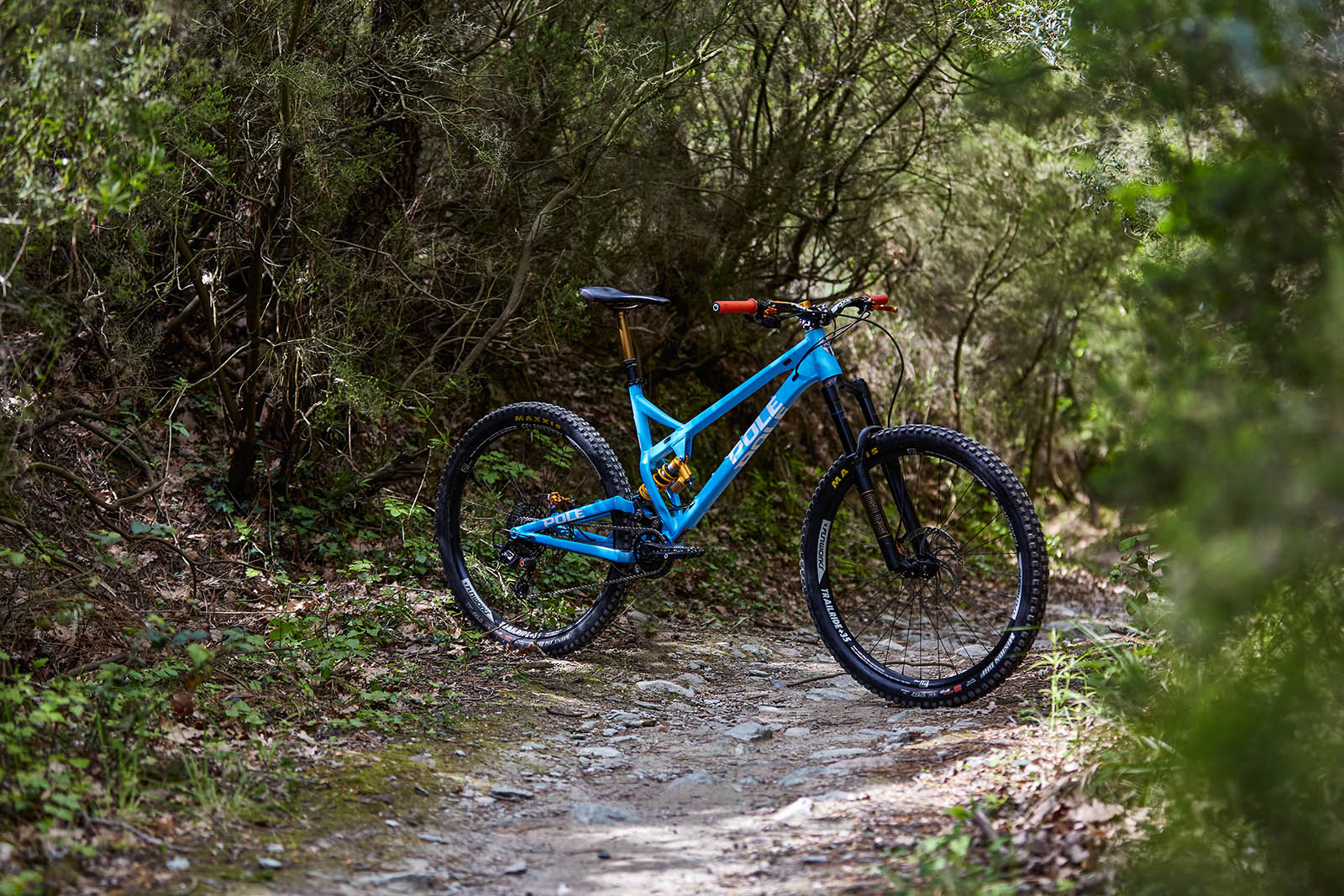

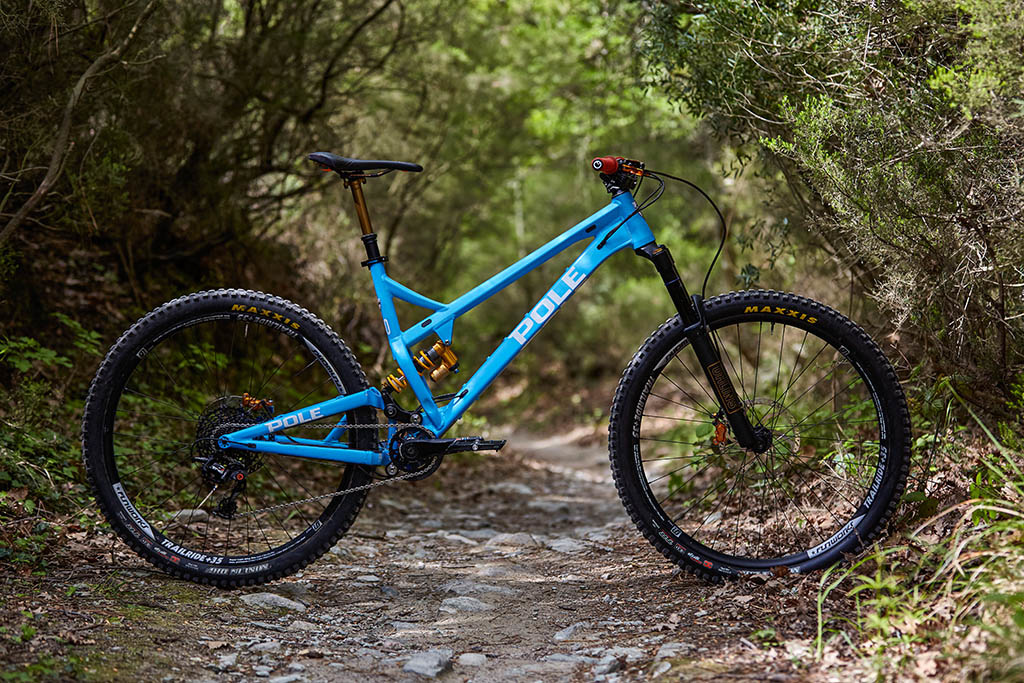
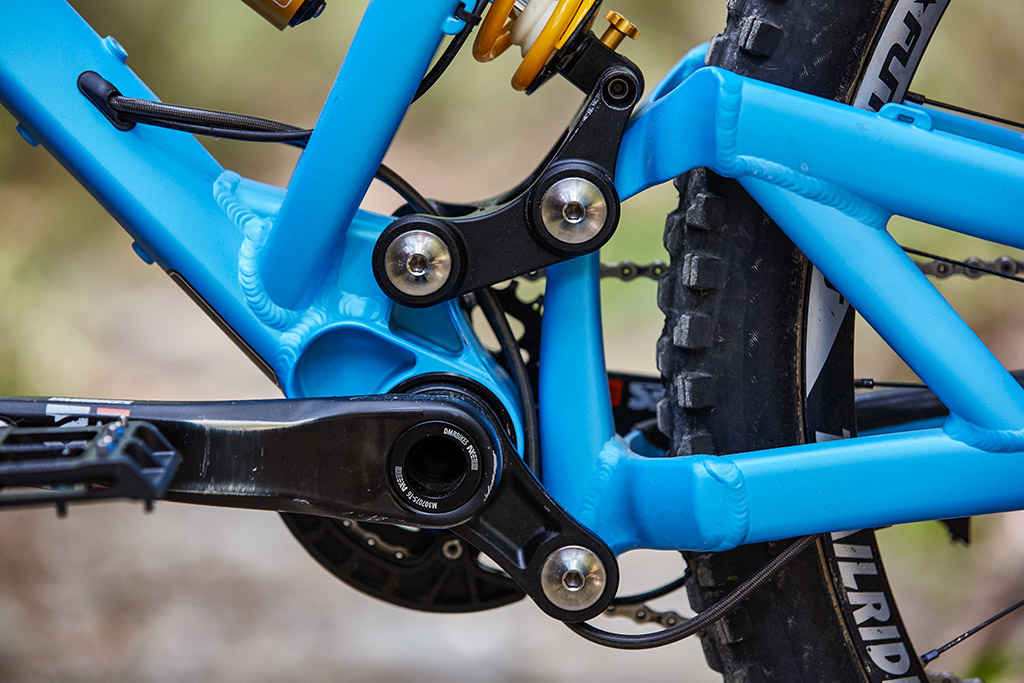

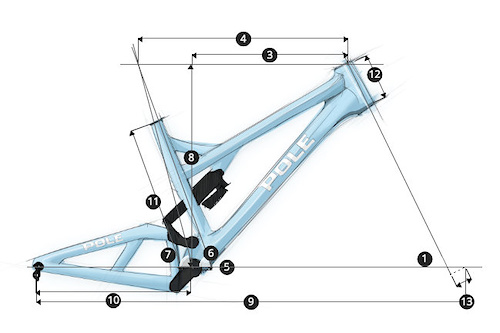

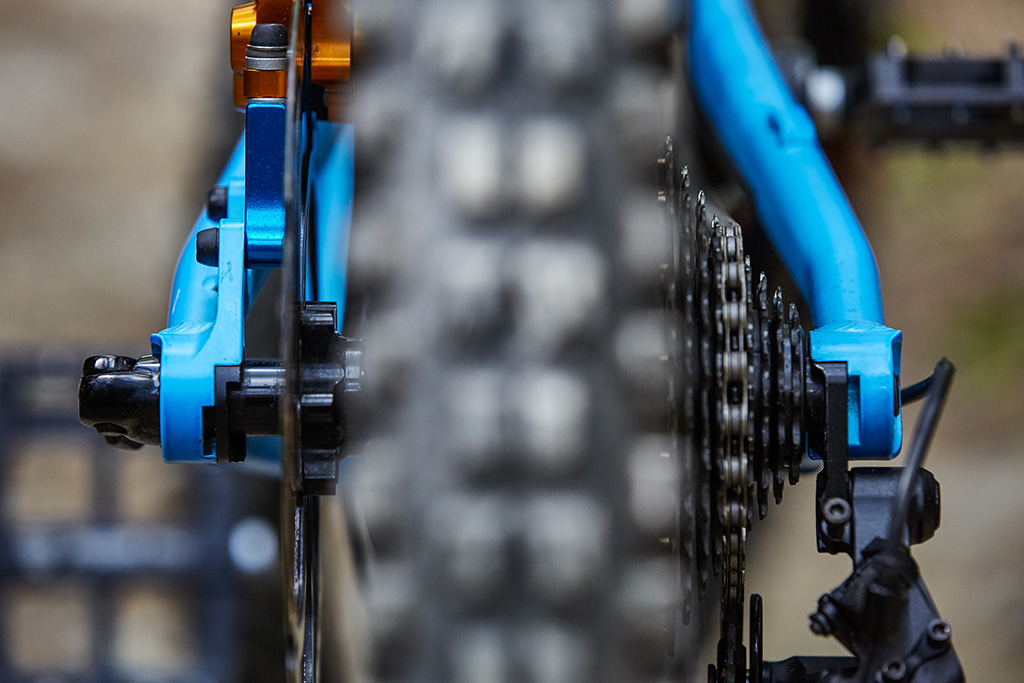

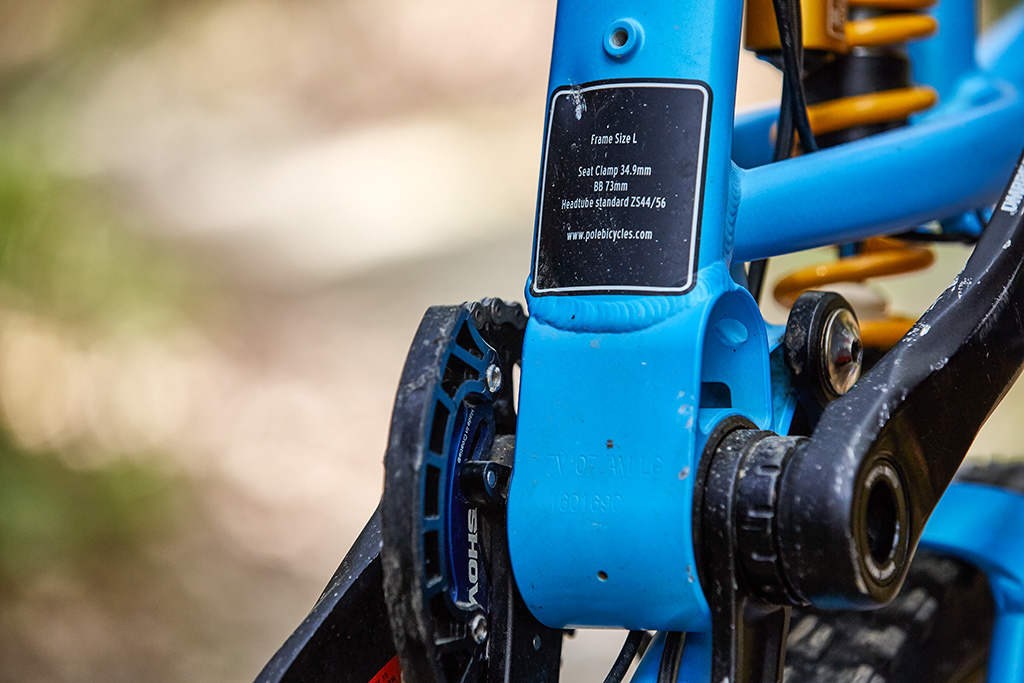

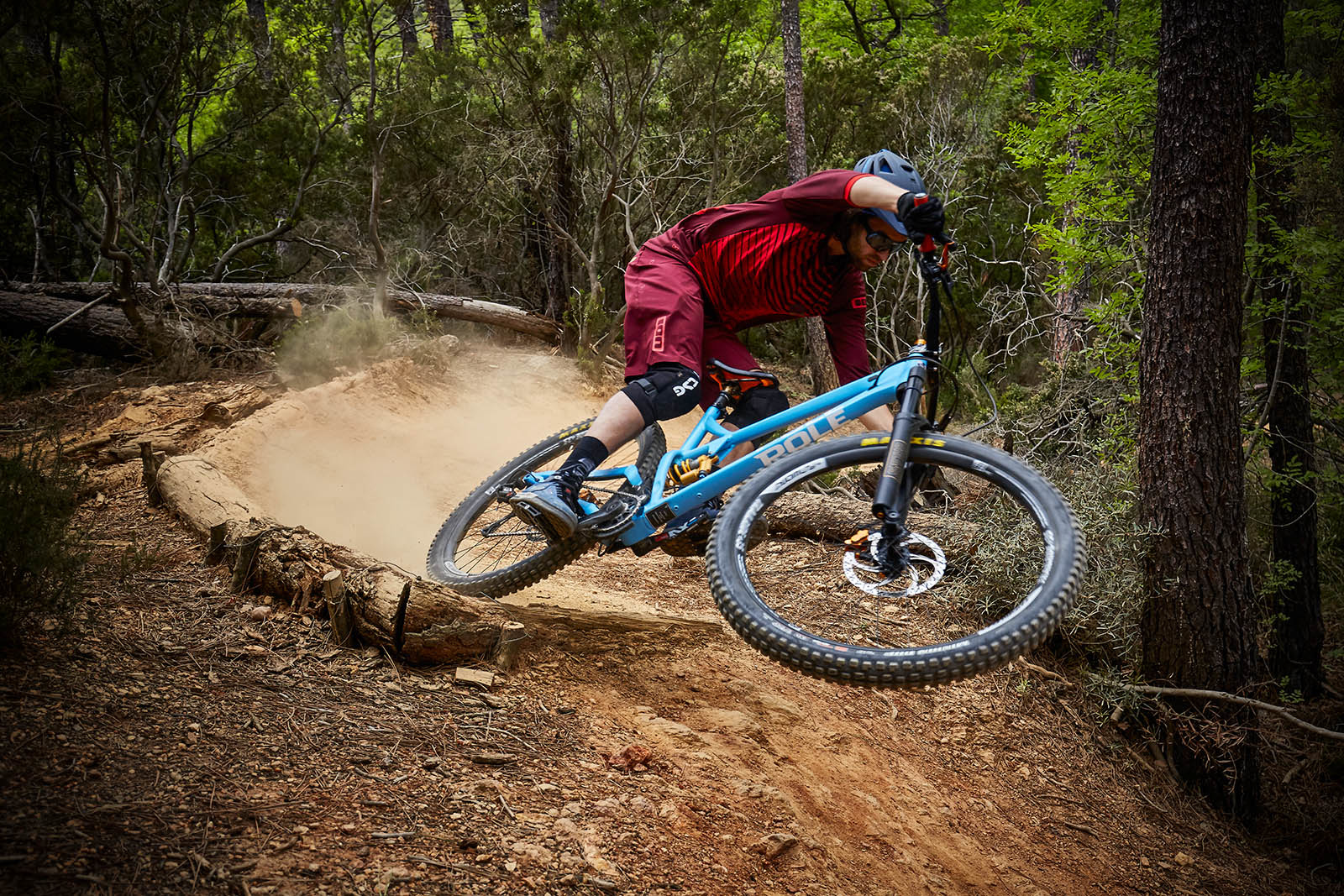
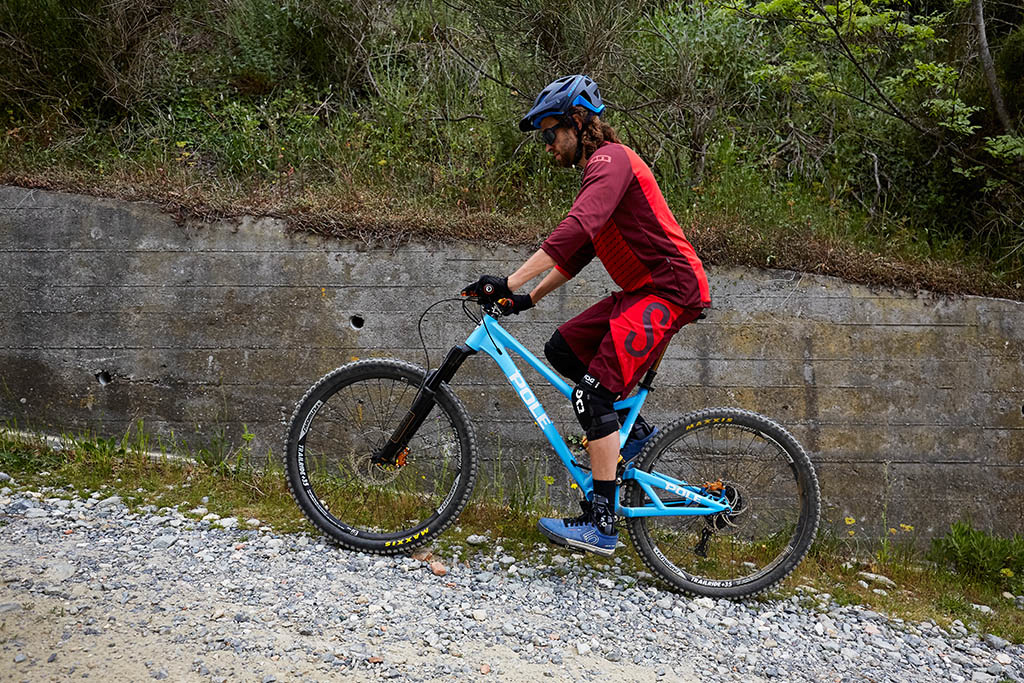


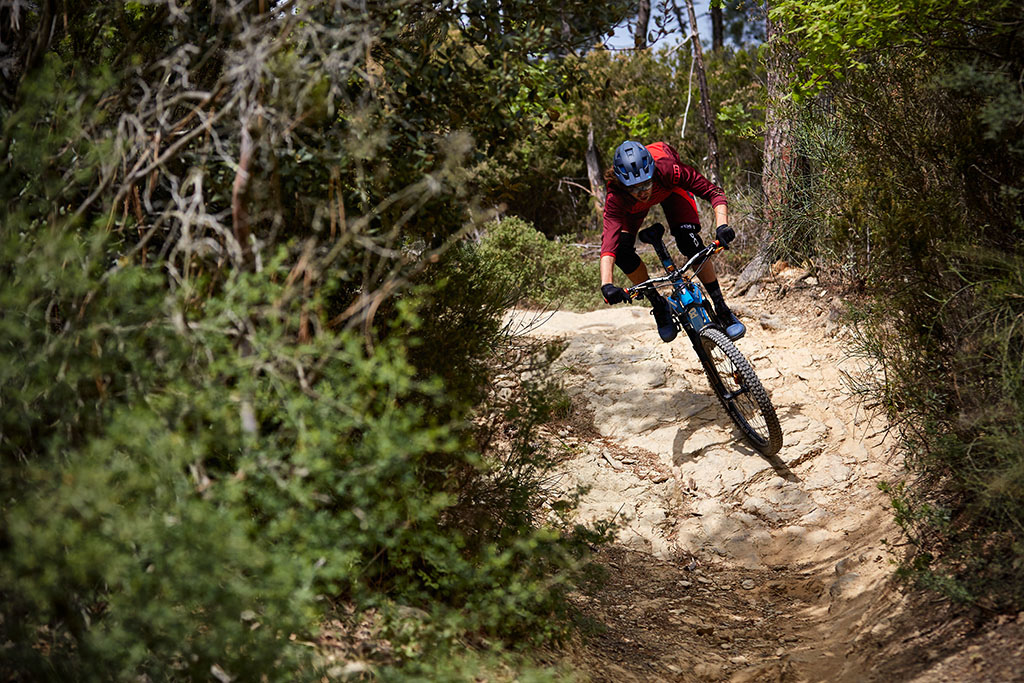

Get stoked Digby!!
Not so applicable on a hardtail as they're a mess anyway but.
If we look at the industry, anybody over 6foot is not really catered for that well, even in XL sizes.
I ride a Large in my current frame at 5"8, I would ride a small Pole to get the same reach or a medium to be longer but at my height I think I should be between a small / medium, certainly not a medium / large.
You should look at where your grips are which determines your offset from the steering tube. If you have fe.12° sweep on your handlebars and 35mm stem your hands will be on the negative side of the steering tube. This offset of the fork does not determine the stem length in any case IMO. All is about the weight balance of the bike and ergonomics of your body. For example I take 5mm stack spacer off if I'm running on a fairly flat trail. I'll rise the handlebars 5mm if I'm going steeper trails. I do this to balance the grip to the front end. I compensate the change by 5psi air pressure change depending the track.
What does stick out vs the other XL size 29ers is that the Pole have kept the seat tube length sensible (480mm) and the stack a decent height (low stacks are another fashionable obsession like short chainstays that aren't proportionate). To put it into context the seat tubes are 523mm on a Spec Enduro, 522mm on a Slash, 520mm Jeffsy. Whys it important?....because you can't get long and low if the seat is whacking your jewels!
The BB isn't that low (same as Slash/Enduro) but a slightly higher level would improve the pop and make manuals a bit easier.
I find the longer CS helps....the 450mm on my mega is a godsend when your climbing , want some F/R balance for moving around or are hitting reallly high speeds of 50 kmh+
Plus you get it in slighty larger XL but think L would be enough for you!
I'm 6"6 and cant ride much else than those long geometries and i'm glad there are more and more bicycle makers (Rocky's new Altitude has a Reach of 490 in XL, Cannondale new Jekyll even got 495) that recognize that the 'conventional old school' geometry is just too short for taller riders and too short for lets say high speed downhills like in EWS!
I ride a Scalpel now. Reach is 436, stack is 612, and chainstay is 444. I've added 3cm of additional stack with a 70 stem and the seat is pushed forward in the rails. This fits. I tried a Yeti SB4.5 with 465 reach and it felt like the front end was in another ZIP code.
What's interesting to me about this bike is the seat tube angle. In theory, with a flat seat, you should have one optimal pedaling position relative to the bottom bracket, and by implication, one optimal seat tube angle. If the bike is wrong, you compensate by shifting the saddle within the rails.
With this bike, not only is the seat tube angle much more vertical, the author has also pushed the seat even further forward. But if you look, it's not flat; he's tilted it forward 2 degrees, so he's effectively rotating his entire body clockwise around the bottom bracket. That shifts his weight forward, opens his hip angle, lowers the effective reach, and puts him in a more effective position to generate power on the uphills. On a seated downhill, that position would be terrifying, but of course we all stand.
It seems to me the argument for this bike isn't the reach itself, it's that the reach provides enough room for this rotated, efficient body position, without sacrificing the downhill performance that's a byproduct of the slack head angle.
The counterargument is that a downward seat angle won't feel right spinning on flat ground, and if the seat is set flat, you're either sacrificing your optimal pedaling position (by having the seat too far forward) or dealing with a very elongated front end (with the seat pushed backwards).
Or so it appears. I want to ride one. It's hard to watch long and slack from the sidelines with the assumption that those of us with odd proportions just don't fit.
Great quote that sheds a lot of light on our current mountain bike geometry paradigm.
Did you know that you need to be Finnish first to finish first?
The problem with sizing up is that very quickly the seat tube becomes too long and running adequate dropper post length (and maintaining prospects of progeny) gets hard.
I'm 6'2" +3 ape index, on an XXL sized bike, and even with big femurs I'm having to run a 150mm dropper slammed - but I do have a bike that finally is in the range of fitting appropriately as a fun trail bike, and capable of setting KOMs when I'm on my game
Can't recommend it enough, and that's not even getting started on having the custom build and really good customer service.... PB please get one in for review! www.bird.bike/aeris-145
Survived more than a few weeks? Awesome.
Maybe a *bit* of an exaggeration, right? I mean, EWS riders seem to be surviving...
1. Stuff holding a couple of weeks - well AFAIK he went through a pair of lightweight alu rims within the 1 week Trans Rezia Race even though he used ProCore (front and back) and Minions 2.5 DH version. ProCore was the main reason the rims still woked tubeless.
2. Paul thought the Fox 36 29er is too flexy for the Pole. He thought about switching it for the Pedelec Fox 36 version that is stiffer. Of course that was running -2° Angleset too. Wheelbase was then around 135cm... Bikeracks are not really built for that long bikes....
Pauls Evo 140 - built up pre race (missing the top bottle and some food - Paul was the sole racer without backpack, fixing all his junk to the bike reaching about 18kg...): fotos.mtb-news.de/p/2054000
His huge pedals are not well pictured: fotos.mtb-news.de/p/2054002?page=2&in=set
on this pic Pauls bike seems shorter than it is. Because instead of hanging on the hook, it was standing on the floor and exceeding too at the hook
(been waiting a long time for this review - and now waiting for the review of the Öhlins 29er - IMHO the best 29er fork (even beating out Lyrik/Fox 36 upgraded with AWK dual air chamber)
Also, I didn't know there was a beefier 36 for e-bikes. TIL!
yeah - the pedelec 36 is not well known. It's 200g heavier - more overlap and some other tweaks for stiffening it up. Wonder why Paul took out the -2° Angleset. Maybe it was mainly simply all forks being too flexy? Shouldn't be too hard for him to have Fox send him a pedelec 36 over - if he promises a review in case it helps...
I know my old 66 RC3 Evo Ti with 38mm stanchions still worked pretty well at 63° - a Pike was rubbish at 63° and kinda got sticky through it's travel (mind though 29er 160mm Pike - I'm sure run as 130mm it would be another story with much more overlap).
I guess for angles 64° you simply need a DH fork, or some really beefy fork like the old 38mm 66 Zocchis. The new "lightweight" 180mm forks like 36, Pike, Lyrik and Co simply are not stiff enough for long reach, high speed and say a 62 or 63° HA - even for lighter riders.
Also, the old Totem was stiff enough to have any HTA you wanted!
Intresting facts!
I've checked the stiffness data of the leading enduro forks in the current issue of german BIKE Magazine (who got excellent testing rigs) and the RXF36 is only marginally stiffer than an 36! But a Lyrik is a whole lot stiffer (under braking and torsional!
I'm not convinced about the Öhlins. I think its damping is perfect for racing but not for everyday riding cause its very harsh at the beginning of the suspension rate! Rode it in an 29er Specialized SJ SWorks beeing set up by an Öhlins technician at an Specialized event.
I've been waiting for this review too after the videos from Bike Radar and Co which were not completely meaningful!
Would rather choose some rigid Hope wheels than any lightweight ones!
had the trailfox 29er with 160mm Pike, and -2° angleset and Minion 2.5DHF up front vs 2.35 Michelin in the back - so ended up somewhere around 63.5° and that already was clearly too much for the Pike.. 63° was on my old 6 Point with -2° Angleset and Zocchi 66. And yeah - Totem was also plenty stiff (was even heavier than 66 anyhow).
I exchanged the -2° Angleset for a 5mm reach headset (also external lower cup) and the Pike clearly works smoother again.
Rode the RXF 36 in the new Enduro 29er in Lenzerheide at the test event - and loved it once setup properly. Since when is the stumpy outfitted with the RXF 36? The 34 has all different airchamber so not comparable. With about 2.2 times the air pressure in the secondary air chamber I simply loved the 36. (printed values on the fork were absolute bogus though - guess they were still from the 34). Kinda like a better Pike with AWK.
I'm pretty light - so maybe for me the only thing that matters is sufficient overlap agains stiction? Don't need super stiff forks - but hate if I feel they start not working well on low HA. I have a Fox 40 in my DHer - and would love it to be flexier (well wheels are some super stiff Spank Stiffy Evo Alo with 35mm internal too).
Only fork I really disliked the flex was the old Fox 34 - but maybe it was more blowing through the travel and the creaking that freaked me out on that one.
Three part write up explains everything in an easy to understand formate. After making my own long top tube/bike short stem/slack set up I can honestly say it's a game changer, its fast and comfortable in every area of riding
www.bikeradar.com/mtb/gear/category/bikes/mountain-bikes/full-suspension/product/pole-evolink-140-review-50854
normal dude riding one.
"funny you asked me about tight turns... switchbacks are actually easier because the extra 98mm inlength lets me use the most of my skill"
If you like less BB drop you could go with EVOLINK 150 (5mm drop). It can accommodate 29" wheels.
I sat on an XL Mondraker last sat which had a 510mm reach (30mm stem) and it felt shorter than my 440mm reach bike (50mm stem).
I have most of the parts on the build and it looks like it will be in the 12.25 kg range. When I received the frame, weight was 4.18 kg including the shock, rear axle, headset cups, and seat clamp.
It is a great looking bike.
How are you enjoying your M...any regrets?
I am also curious as to your reasoning behind why longer chain stays also make for a better climbing bike? Understandably they help keep the front wheel down on such a slack long bike, but that is more of a solution to a problem that shouldn't be there in the first place in my opinion. And lets be honest, at 37lbs, you are going to fatigue faster and climb slower... there are many DH bikes that weigh less.
18' chain stays
64 degree HA
Those numbers are all close to Minnaar's V10 29er, actually the wheelbase is a little longer.
"Manualing this bike isn't easy"
"If anything to Evolink is too stable"
"Yes, super tight switchbacks that need trials skills to turn aren't so easy"
www.pinkbike.com/video/470470
The trail is here: www.strava.com/segments/4156222
Once you're shredding down, and the saddle is slammed, it doesn't matter what the angle is?
Look forward to seeing more progress in geometry!
"
If anything to Evolink is too stable. Its constant desire to truck through the worst situation in a straight plane means it can be quite hard to keep it leaned into cambers and stay on track in long, flat corners. It also slows down direction changes between consecutive corners. This is a combination of the angles, huge gyroscopic motion of the heavy tire combinations, and the bottom bracket drop between the axles.
"
The gyroscopic effect doesn't necessarily fight direction changes. You can use it to your advantage as well. Bank/roll (or how you want to call it) around the fore-aft axis and this will help yaw around the vertical axis. And the long and low bike should actually make it easier to bank/roll the bike. At least that'd be what I expect from looking at the bike. Of course I can't argue with the impression you got from riding the bike. But in part it depends on how you approach your corners. Something that might have worked with your Specialized bike might not work with this one.
This question isnt specific to this bike, but more in general.
Note that the bikes true head angle needs to be measured in dynamic head angle. Fe. hardtails have very much steeper head angles when you ride them than they are leveled without the rider's weight.
I want a forgiven bike... not a bike that kills me... i'm not Rude or other pro...
This seems like a bit of a hyperbolic statement. If it was that you can climb the trails you normally ride better on the Pole than bikes you normally ride, that makes sense. If you're saying you can climb "better" on this bike on smooth single track than a superlight carbon hardtail, than that seems like some serious BS.
Come on @paulaston , so MX bikes are a one size fits all, what about we do that on MTBs as well?
And the whole head angle comparison was valid back in the dark ages when everyone was riding the same wheel size (26"), with similar tire sizes and fork offsets.
You're comparing apples and oranges here.
People are starting to understand what anti-squat is, now is time to talk about mechanical (or ground) trail instead of head angles
The first thing is that you're right. It was very hard for me to try and get a dropper post that was the correct size. I found that I was limited to 100mm drops with a maximum length of about 340mm and that seriously narrowed my options. In fact, I could only find one dropper that fit this spec and it was a KS Lev Integra which is pretty expensive here in Australia, $500 or so.
The second thing is that the reach is fine for me. I normally ride small frames but the XS Evolink actually has exactly the same reach as my previous small size 15" frame, and that's counting the seat post being set back by a few centimetres on my old bike and this one having zero set back.
In terms of handlebar height it's again no different than my old bike at maximum saddle height.
So basically the fit is pretty much identical to my old bike which was why i was so confident in buying a $3000 frame from overseas.
Now I just need to order the wheels and pick up a DVO Diamond fork and I'll be able to finally get it rolling.
Looks like USA is becoming one of our main markets at the moment
If somebody forto go mention.
shovel.bike/system/product/forty8
NO!!!!!! Absolutly wrong!!! You should study the effects of throttle control in detail!
The postmount adapter isn't even offset by 3mm, so just can't see it working with a full boost hub.
The black adapters looked like they were the 3mm adapters that were being talked about.
What planet are you from?
My bike is not short or light with no carbon, heavy tyres and a coil.
7005 is indeed more resistant to fatigue than 6061 however that's for a straight tube and takes no account of welding quality, tube shaping and thickness that you find in different bike frames.
i do not own pole bike , but modified my reign frame slightly ( offset shockmount bushing to steepen seatube + 1.5 degree headangleset to slacken front and therefore steepen seatube even more) rocking 63.5 HA now and i can confirm that ride characteristics are definitely towards what is told in this review about the pole..
Still, looks miles better than Nicolai/Geometron.